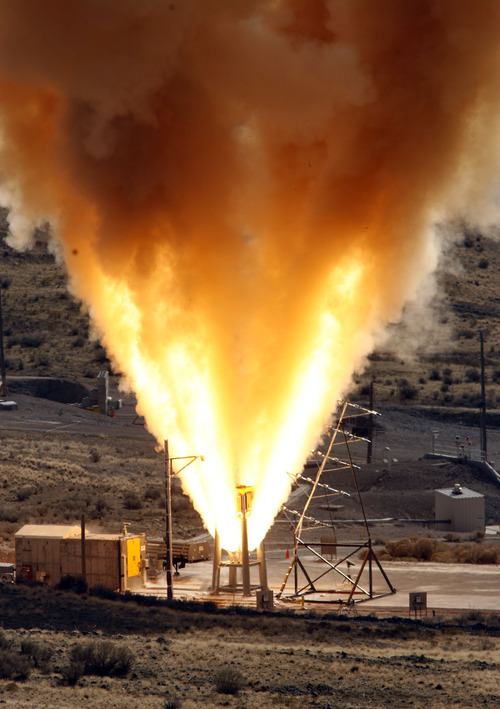This is an archived article that was published on sltrib.com in 2012, and information in the article may be outdated. It is provided only for personal research purposes and may not be reprinted.
Utah's Alliant Techsystems said it is preparing an "inert" abort motor to fly atop the Orion crew vehicle that NASA is planning to use on a test flight in 2014.
The Orion crew vehicle, which is being developed by Lockheed Martin, is being designed to fly aboard NASA's new space launch system, the heart of which is a massive rocket that will be powerful enough to take crew and enough cargo into orbit for eventual missions to the moon, asteroids and one day to Mars.
In the event of an emergency on the launch pad or during ascent, the abort motor would be used to fling the Orion crew capsule safely away from the rocket.
ATK said the abort motor being prepared for the upcoming test flight is an "inert prototype" manufactured in 2008. It was recently returned to Utah from Lockheed Martin's facility in Denver, where it was used in a series of acoustic, aerodynamic and other pre-flight design tests of the crew capsule NASA envisions will carry as many as six astronauts into orbit. It was never loaded with fuel.
NASA's planned flight test of its new space launch system in 2014 will be unmanned, so there is no need for the abort motor to carry propellant, said George Torres, a spokesman for ATK.
"In the case of the [prototype] abort motor, it will be re-configured to support the first orbital test flight of the Orion crew vehicle," said Charlie Precourt, general manager and vice president of ATK's Utah-based space launch system. He added that as part of the motor preparation, ATK will add instrumentation to collect environment and flight data during the test launch.
ATK successfully tested its abort motor design in 2010 during a launch-pad test that simulated the failure of the main rocket.
During an earlier test in 2008 at ATK's facility near Promontory, NASA's manager of the Orion Launch Abort System said the motor was capable of producing about a half-million pounds of thrust. He explained that should be enough to safely propel the crew module away from any trouble and fly it about one mile to safety.



